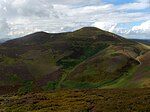Battle of Rullion Green

The Battle of Rullion Green took place on 28 November 1666, near the Pentland Hills, in Midlothian, Scotland. It was the only significant battle of the Pentland Rising, a brief revolt by Covenanter dissidents against the Scottish government. Sparked by opposition to the restoration of episcopalianism in the Church of Scotland, a Covenanter army under Colonel James Wallace was defeated by a government force led by Tam Dalyell of the Binns. While casualties were relatively light, between 40 to 50 Covenanters were killed and up to 85 prisoners taken, many of whom were alleged to have been tortured. 36 were executed and others transported to Barbados, while unrest continued over the next two decades, culminating in the extended period of repression from 1679 to 1688 known as The Killing Time.
Excerpt from the Wikipedia article Battle of Rullion Green (License: CC BY-SA 3.0, Authors, Images).Battle of Rullion Green
A702,
Geographical coordinates (GPS) Address Nearby Places Show on map
Geographical coordinates (GPS)
| Latitude | Longitude |
|---|---|
| N 55.85005 ° | E -3.25505 ° |
Address
A702
EH26 0PX , Deanburn
Scotland, United Kingdom
Open on Google Maps









